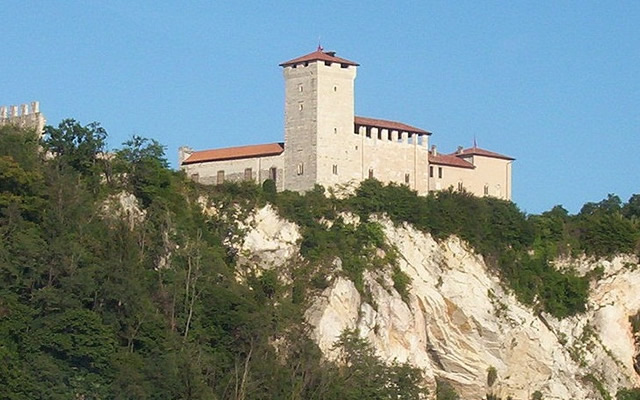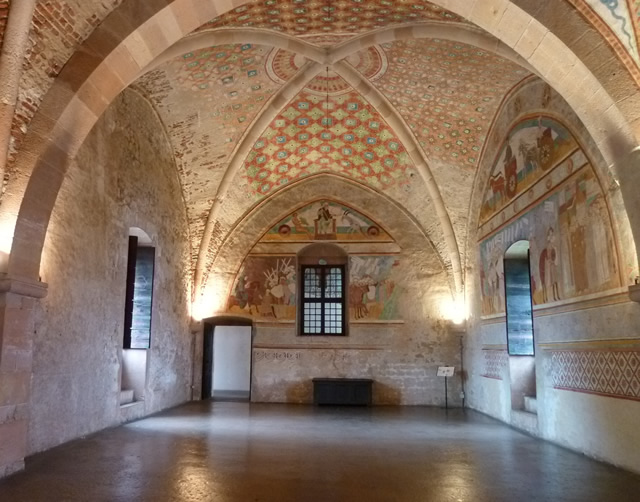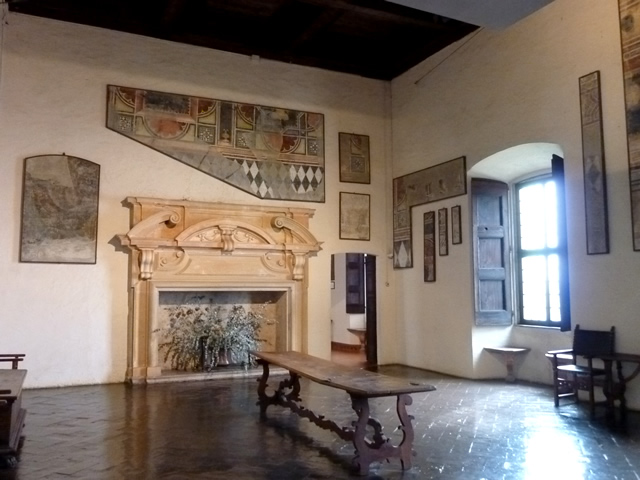The Rocca di Angera (Angera Fortress)
This imposing medieval fortress (also called Rocca Borromea) was erected in a strategic position at the southern tip of Lake Maggiore, allowing it to control the area both commercially and defensively.
Built on top of a high, isolated dolomitic crag, the fortress dominates the town of Angera which straggles along the bottom of the rockface and beyond.
In the middle ages the pre-existing ancient walls were enlarged and embellished by its new owners, the Visconti family, who had become at the end of the 13th century the Lords of Milano.
Before climbing on foot (or by car) the limestone hill on which the “Rocca” stands, you could pay a visit to the little, charming town of Angera, just laid between the foot’s hill and the lake. Many important archaeological discoveries have been made here during the last decades: if you are fond of ancient history a visit to the local little Museo Archeologico is recommended.
You can reach Angera both by car or taking the ferry from Arona (just a 5 minute crossing). The centre of the town has several bars and cafès for lunch.
The Rocca di Angera is definitely worth a visit, even if only for the gorgeous views you can enjoy from its terraces and towers! In around fifteen minutes on foot from the town centre you can reach the imposing castle whose numerous rooms were realized between the 12th and the 17th century.
Mid 15th century the fortress was purchased by the Borromeo family - among the most influential families of the time - who still own the castle. There are many beautiful rooms to visit, the most remarkable one is the socalled “Sala della Giustizia” (Justice Hall), with a spectacular series of fresco paintings dating back to the beginning of the 14th century.
Before visiting the lovely courtyard and gardens of the Rocca (with a huge, old wine press) or drinking something at its panoramic Cafeteria, you can visit one of the most important Toy Museums (Museo della Bambola) in Europe, with hundreds of rare pieces mostly dating back to the 19th century.


